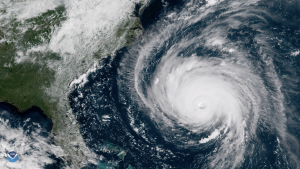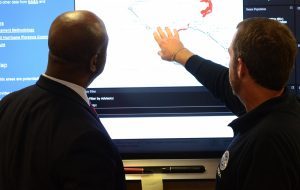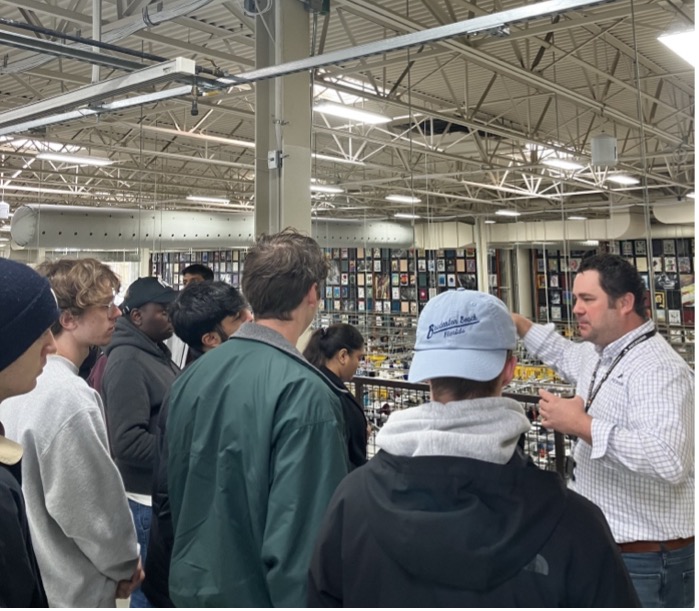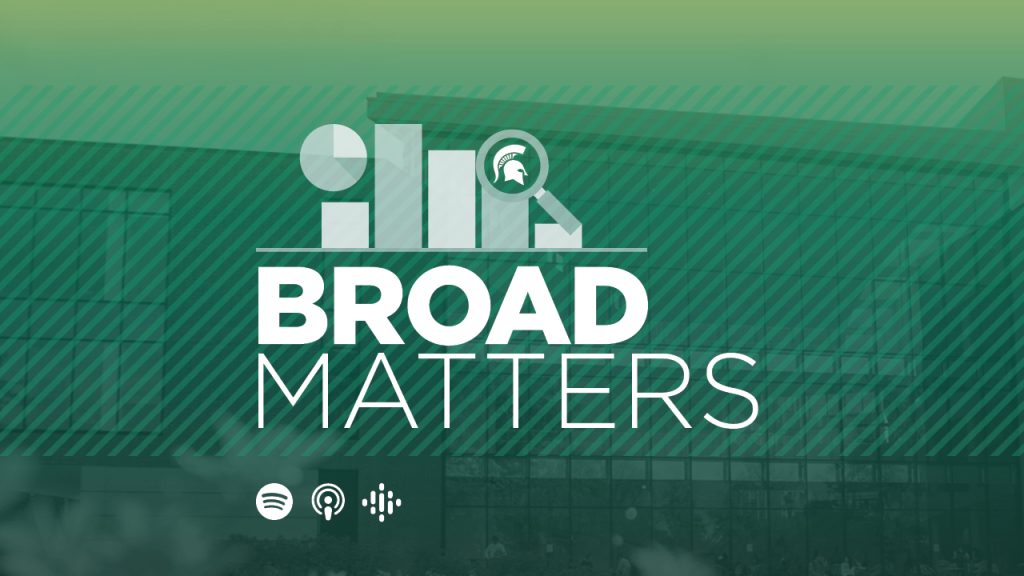Businesses in the Carolinas were feeling the effects of Hurricane Florence long before the storm’s expected arrival. And those businesses will continue to weather the fallout long after winds have died down.
“Products coming into and out of an area that has a focused threat like this change dramatically before a threat’s arrival,” Stanley Griffis, John H. McConnell Professor of Business Administration at the Eli Broad College of Business, said ahead of the storm’s landfall. “You don’t see a lot of raw materials moving into these areas because, why would I want to move something in that might get destroyed?”

Hurricane Florence approaches the Carolinas Sept. 12. Photo courtesy NOAA Environmental Visualization Laboratory
“Right before the thing comes to shore you get a lot of pre-positioning” of goods in high demand for storm preparation, Griffis said, like plywood and other supplies to protect homes and businesses. “The other thing that often happens in these areas is, a lot of the manufacturing base that might be at risk would be trying to get things out of the way of the storm,” such as cars just off the assembly line.
“You may see a lot of freight movement out of the area in addition to all of the people moving, which stresses the infrastructure … as businesses try to get products out of the way of the storm so if it hits this factory or this warehouse, we can preserve expensive goods,” Griffis said. “Storms like this disrupt a supply chain for a period of time from operating under their normal operating conditions.”

Stanley Griffis
Griffis, who teaches for the top-ranked Department of Supply Chain Management, said many of today’s businesses rely on a “lean” model, in which factories have raw materials coming from far-flung suppliers; retailers rely on “just in time” goods that are delivered just before being sold, and neither has much excess capacity.
“The modern business cycle has incentivized businesses to not sit on as much material, which affects that post-storm recovery,” Griffis said. “Think about a production line: you’ve got a flow of raw materials that are coming in the door, your workers convert them into finished or semi-finished goods, and then they go out the door. If that flow of materials needed to run your operation ceases, it shuts you down.”
“Once the storm passes, getting back up and running is another significant problem, because all the transportation into the area is now carrying building materials to repair damage and things like water and supplies for those impacted by the storm,” Griffis said. “If you have warehouses full of material,” the effects are mitigated, “but most modern supply chains don’t operate that way anymore, because it’s too expensive to hold that inventory.”
“These kinds of disruptions tend to knock a system down … maybe your supplier got knocked offline, or maybe they just can’t get to you because roads or bridges are out,” Griffis said. “The effects of these disruptions can linger longer than they might have when you had large buffers of inventory and capacity.”

Associate Administrator for Response and Recovery Jeff Byard meets with South Carolina Sen. Tim Scott Sept. 12 to provide an overview of federal efforts in support of Hurricane Florence at the National Response Coordination Center. FEMA Photo by Raymond J. Piper
Such disruptions are magnified by loss of access caused by the storm, or even simply the anticipation of a storm. “There’s a pretty big port in Charleston, in South Carolina,” Griffis said. “Granted, it is not directly in the path of the eyewall, but you’re not going to be bringing a ship in or out of Charleston yesterday, the day before, today, possibly all the way through the weekend.”
“Now, you’ve got all of those things that would have gone through that port over the course of a week and a half that aren’t coming or going, so things pile up at the port waiting to leave, and things pile up” out at sea, on ships unable to dock at the port.
“It will be weeks before that gets back to a normal operating tempo, where things are coming and going on schedule,” Griffis said. “There’s a lot of urgent planning that everybody has to do, that moves anything into or out of these areas or produces anything in these areas,” Griffis said.
Corporations try to manage supply chain disruptions by setting up real-time command centers nicknamed “war rooms,” Griffis said.
“They’re exactly what that connotes: it’s a place where, when a disruption occurs, they’re able to start preparing for the disruption,” Griffis said. “GM famously has a very high-level war room that they use when they are hit with any disruption: a power outage, labor strife, and hurricanes.”
Of some notoriety is the war room of Waffle House, the regional restaurant chain.
“Waffle House is known to continue to operate as long as they can … and a FEMA (the Federal Emergency Management Agency) administrator in 2011 commented that if FEMA sees that a Waffle House in an area has shut down, we know that’s an area that’s been particularly hard hit,” Griffis said. “It has been called the ‘Waffle House Index’” to measure a storm’s immediate impact.




